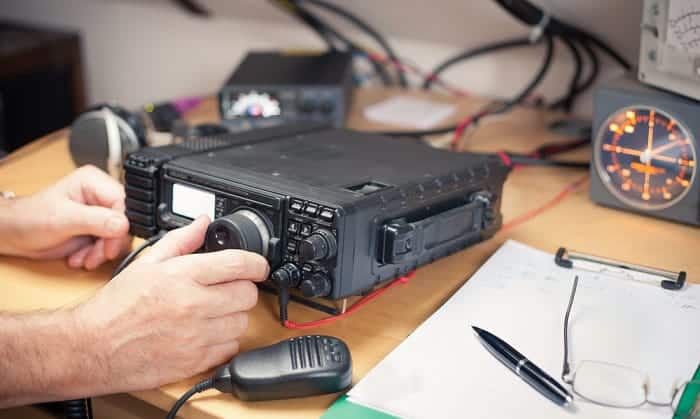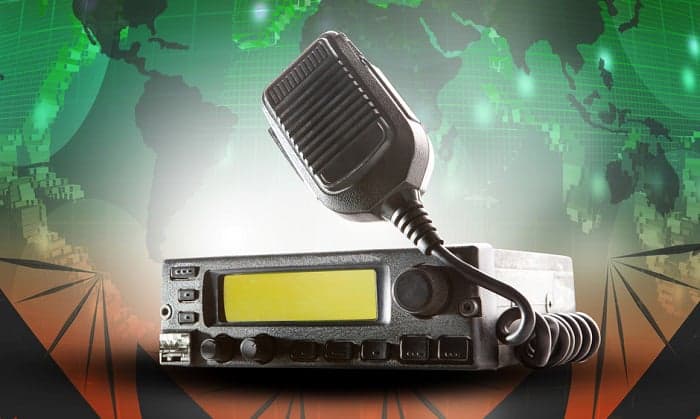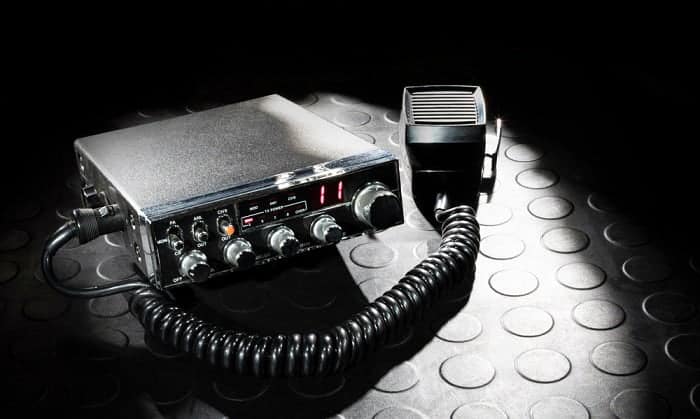Also known as amateur radio, ham radio has been one of the traditional forms of communication before the innovation of phones. However, it is prone to one problem that can make it frustrating to use – interference.
To minimize or eliminate interference in ham radio, secure a license from the authorities, get in touch with the local power provider, install the radio properly, use high-quality components, and avoid congestion.
Keep on reading as I share tips on how to stop ham radio interference.
Table of Contents
What is Ham Radio
Ham or amateur radio utilizes a radio frequency spectrum for exchanging messages non-commercially. It is also used for private recreation, self-training, emergency communication, and wireless experimentation, among other things.
Like other wireless technologies, ham radios rely on electromagnetic radiation for sending digital data and voice codes. More so, you will also need external equipment, such as antennas, receivers, and transmitters.
With ham radio, it is easy to communicate with other people, making it a must in early forms of emergency communication and entertainment. When other communication channels are not working, such as during a calamity, you can always rely on the functionality of ham radios.
What is an Interference in Ham Radio
While ham radios are beneficial in more ways than one, they can also be frustrating. Such is the case when there is interference. The latter blocks the smooth flow of signals and communication between parties. The result is that the voices are unrecognizable, and static can also be present.
Interferences result from many things. For instance, it can be from electromagnetic disturbances on the radio. Another potential reason is receiver selectivity or poor immunity. Having multiple users on a single channel is also a possible culprit. More so, interferences are common in the case of using low-quality apparatus.
When talking about what causes interference in ham radio, one more thing to highlight is that there are two main types:
- Electric Noise: An electrical interference happens when there is arcing in equipment or power lines. It can originate from anything that has electric power.
- Electronic Noise: It is a result of leaks of radio frequency signals. The latter can start from computers or consumer appliances that you will find next to the ham radio.
What You Will Need to Follow This Tutorial
Before I proceed to the fundamentals of minimizing or eliminating interferences, start by preparing the following:
- Ham radio
- Radio components
As you can see, you won’t need a lot. You just need the radio itself and the parts. However, when such are of low quality, interference will be a persistent issue.
A Step-by-Step Guide on How to Stop Ham Radio Interference
It does not take an expert to deal with interferences in ham radio. Here is a quick guide on the things that you should be doing.
Step 1. Secure a License
Before using ham radio, you will need a license. Regardless of the reason why you are purchasing an amateur radio, secure the necessary permit. It ensures that the radio is under the supervision of the authorities. Hence, you can expect minimal interference and clearer signals. For more information on why you need a ham radio license, please click here.
Licensing is an important step as it allows the authorities to distribute frequencies in different locations. Without a license, interferences are more common, resulting in an unpleasant experience when you are using ham radio.
Step 2. Contact Your Local Power Company
One of the culprits for ham radio interference is the power line. It generates intermittent noise at a frequency of 60 to 120 Hz. When there is bad weather, the result of the interference is more notable.
The noise from the power line happens when there is corona discharge. The latter, in turn, happens when the ionized air leaks out of the atmosphere. Every time the frequency reaches 60 Hz, there is a buzzing noise, producing interference.
If the problem is in the power line, do not attempt to resolve it on your own. The best thing to do is get in touch with the power company in your local community and let them handle the issue. Otherwise, they can slap you with a fine and you might end up causing a serious problem that is costly for the power company to address.
Step 3. Ensure Proper Installation
To stop radio frequency interference, one thing that you can do is as simple as ensuring proper installation. When the unit is in the wrong position, it is likely that it will suffer from obstructions. In turn, this will hurt the overall output and performance.
Refer to the manual from the manufacturer to ensure the proper installation of the ham radio. The positioning of the unit is one of the most important to guarantee its peak performance. Watch this video for a quick guide on installing ham radio, specifically in a vehicle.
Step 4. Use High-Quality Components
Interference is also a result of having components of inferior quality. From the radio itself to the cables, make sure that everything demonstrates top-notch quality. Otherwise, the performance will suffer, and you will experience many problems beyond interference.
Choose the best cables, isolators, antennas, and other parts. Even if you have a high-end radio, the performance suffers if you use low-quality components.
Step 5. Avoid Congestion
When there are lots of people using a radio at the same time, congestion happens. In turn, more users are trying to use the same radio frequencies that are present in a specific location. It will make some parts of a message incomprehensible, negatively affecting the overall quality of radio communication.
Pro Tips
Minimizing interferences is not the only thing that you should do to ensure the peak performance of the ham radio. This section talks about some of the most important tips to keep in mind.
Pick the Right Radio
The quality of the ham radio is one of the most important in ensuring peak functionality and minimal interference. Read user reviews and learn from the real-life experiences of other people. Go beyond the price when evaluating the possibilities. Do not hesitate to pick a radio even if it is expensive if the cost is justifiable.
Choose the Right Location of the Radio
Like with other types of radios, location has an important role in the functioning of ham radios. Choose a position that is away from things that can affect the signals. For instance, it should be in a place without obstructions like large trees and tall buildings. You should also keep it away from appliances that can interfere with the radio signals, such as computers and televisions.
Log an Interference Complaint
In some instances, you cannot fix the problem yourself. Hence, you have no option but to work with the authorities, such as the local power line company. Get in touch with the right people and avoid doing things without their permission. Otherwise, you might get in trouble and the problem can worsen instead of being resolved.
Conclusion
With the things mentioned above about radio frequency interference, how to find it and fix it, we hope that you have learned a thing or two. From securing a license to avoiding congestion, take note of the things listed for your ham radio’s peak functionality.
Did you enjoy this tutorial on how to stop ham radio interference? Are there other steps or tips that you would like to share? Feel free to leave a comment below.

After four years working as a radio mechanic, I know that everything about radio communication is not breezy, even though it greatly benefits us. That is why I set up a website sharing my skills and guides to help non-professional users use their radio headsets, set up their antennas or choose the right products, etc.




